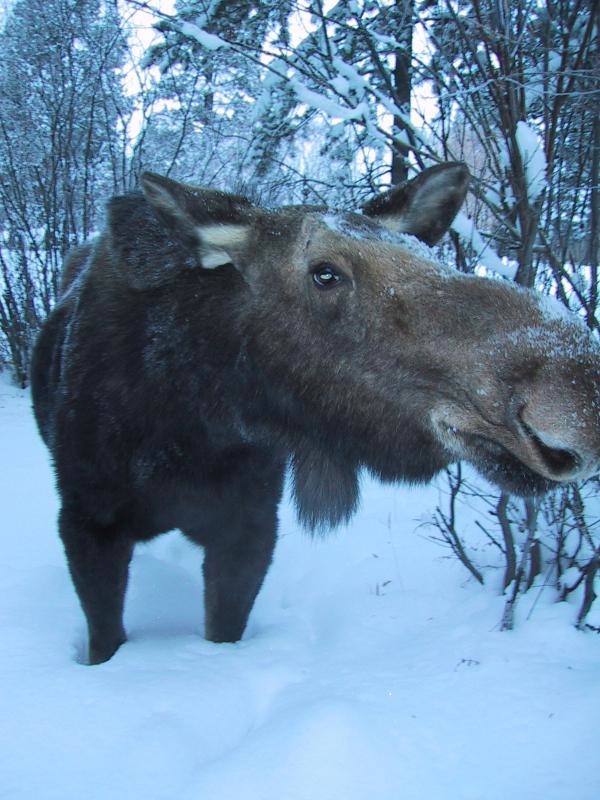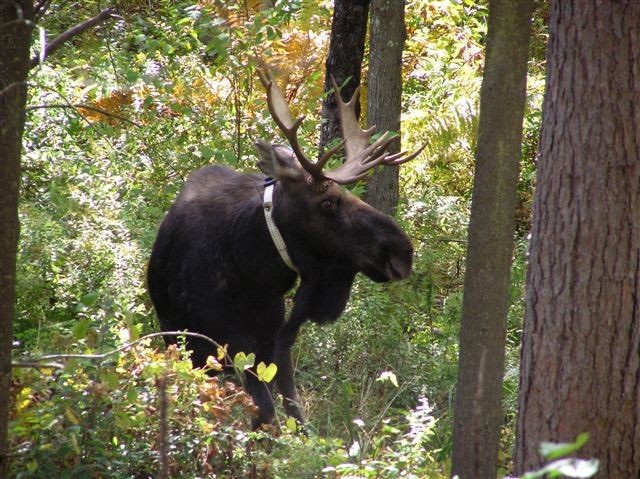and problematic species
Moose in the Quabbin
Moose, North America’s largest wild animal, have returned to Massachusetts. When the area was initially colonized, most of New England's forests were cleared and used for agriculture. With the forests cleared, the moose lost their home habitat, and disappeared from the area. However, as midwestern farms became the breadbasket of America in the 1800s, much of this cleared land was abandoned, allowing the forests to regenerate. Over the past 30 years moose sightings have greatly increased from a reported 75 in 1998 to 1,000 in 2006. Researchers estimate that there are about 100 moose in the Quabbin watershed area. During the 2006 Quabbin deer hunt, hunters filled out survey cards recording moose sightings. Through this process, 105 individual moose were identified within in the four hunting blocks. The effect of their increasing population and consumption of browse on Quabbin forests especially the regeneration of new growth could be devastating.

�Wendy Seltzer: http://wendy.seltzer.org/
The Quabbin Reservoir heralds some of the best moose habitat in the area. Moose are the largest member of the deer family, and the largest animal currently inhabiting New England; they are typically about 6 feet tall at the shoulder, can weigh up to 1,000 pounds, and consume 40-60 pounds of browse daily. Many scientists are therefore worried about the impact these large herbivores will have on the forests. Many are also worried because moose normally live in boreal forests much farther north, such as Alaska and Canada. Massachusetts, on the other hand, is the third most-densely populated state in the country. Many interactions between moose and humans can be dangerous, both for the people and for the animals. Numerous motorists, as well as moose, have been killed in car accidents with moose. Massachusetts is also a great deal warmer than normal moose climates, and many moose experts believe moose living in the area are subject to high levels of heat stress.
The DCR is interested in knowing the extent Moose may be affecting the reservoir. Dr. Steve DeStefano and his graduate student David Wattles (Natural Resources Conservation, UMass Amherst) have been conducting research on Moose in the Quabbin. They have GPS collars around 20 moose and have tracked them over the past few years. We were interested in looking at of the extent of moose browsing at different areas of the Quabbin.

This Moose in the Quabbin has a GPS collar as part of the UMass study
�Dave Hall: www.dhsmall.net/
| © 2008 Jason, Jeff, Julian & Juliet | ↑ go to the top | Design by Nicolas Fafchamps |